Getting a backup of your WordPress website may save your business. You need to frequently backup WordPress website as a safety measure to always be able to revert your site back to a recent well-functioning version.
Getting a backup may be confusing for a lot of users. In this article, we explain how to backup WordPress website in a few steps.
It is also possible to make use of WordPress backup plugins which are particularly useful when creating backups, restoring websites, or migrating between WordPress hostings.
Why backup WordPress website?
The answer to this question is the same as why do we get insurance for our vehicles.
Getting a backup for your website is exactly like buying an insurance service for your car. When you have a backup of your website, even if your server goes down or a virus deletes all of your root directory files, you could simply restore all of your data back to their original state.
This is why you should always backup your website.
Backup WordPress website using UpdraftPlus plugin
UpdraftPlus is a popular plugin designed by updraftplus.com. It currently has over 2 million active users who frequently use this plugin to backup their websites.
With this plugin, you can directly upload your backup to cloud services such as OneDrive, DropBox, Google Drive, Amazon, etc. or even to your email.
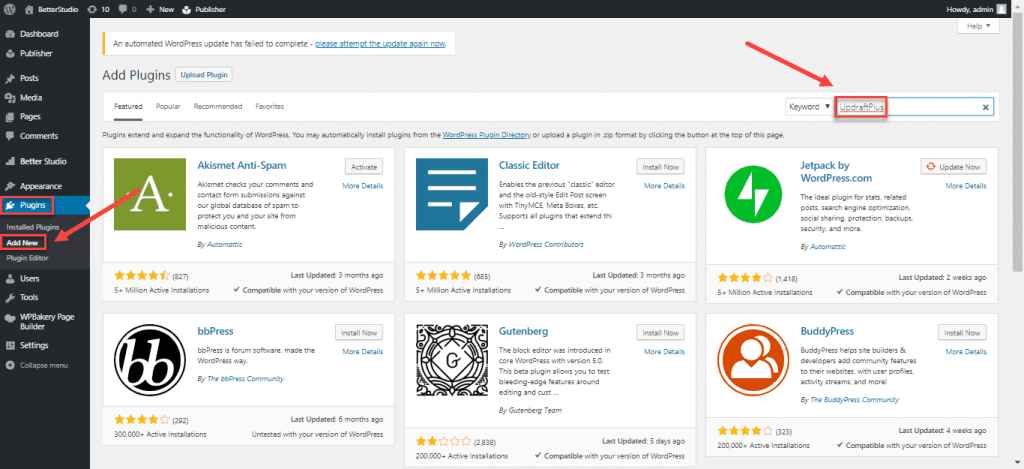

UpdraftPlus offers scheduled backup, which will automatically backup all of your files (files, database, plugins, themes and etc.). In addition, you can use this plugin to restore your website.
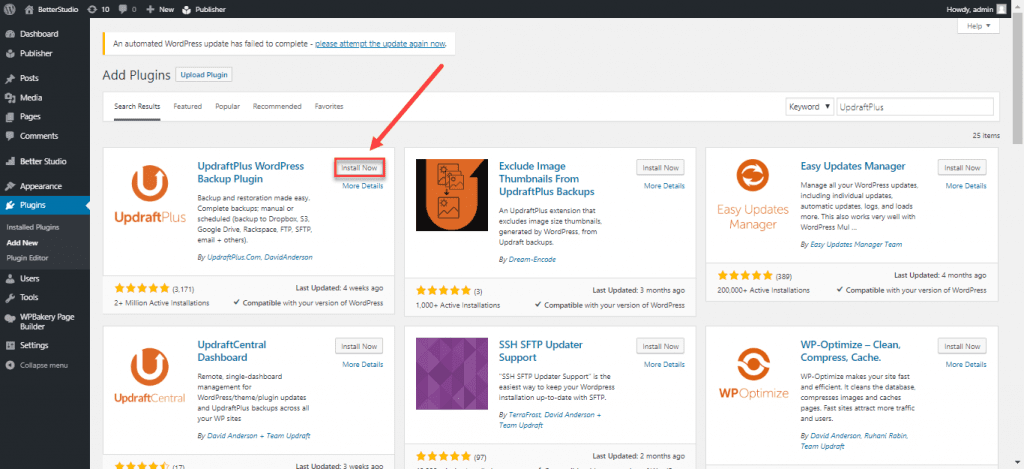

To install UpdraftPlus, head over to your Plugins and click on Add New. In the search box, type-in UpdraftPlus and download and install the plugin.
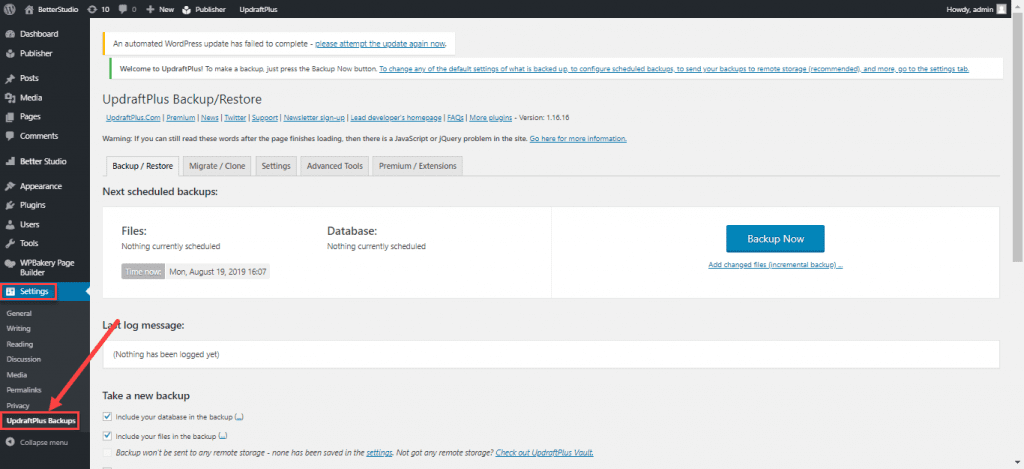

To access the plugin, head over to your WordPress dashboard, Settings and locate UpdraftPlus Backups.
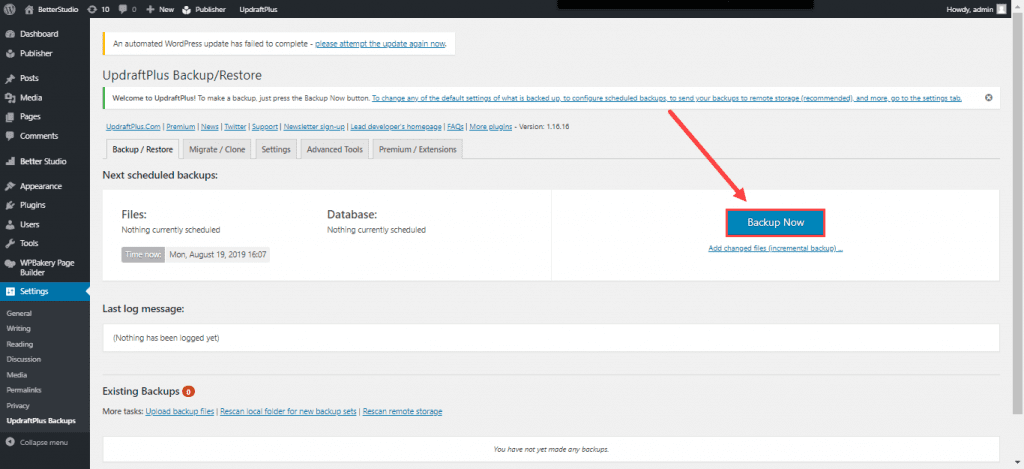

The current status section will show you the current status of your website and by clicking “Backup Now” you can backup your website.
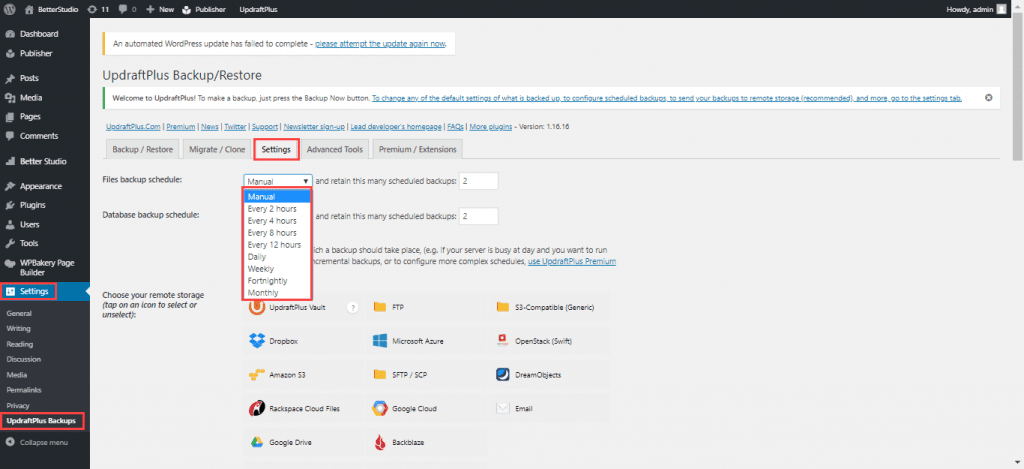

If you wish to schedule your backups, simply head over to its settings and set “File Backup Schedule” to any other options besides “Manual”, then click on “Save Changes”. This plugin will automatically backup your website for you.
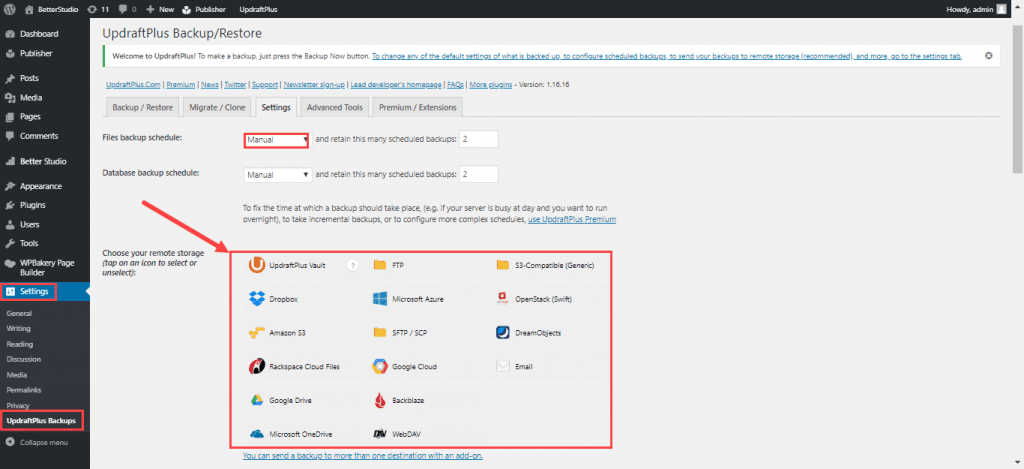

The next step is to select your desired cloud service to save your backup. To do so, head over to Settings and select your desired cloud service.
You will then receive a link, click on it. Once the process is finished you have to click on “Complete Setup” to finalize the changes.
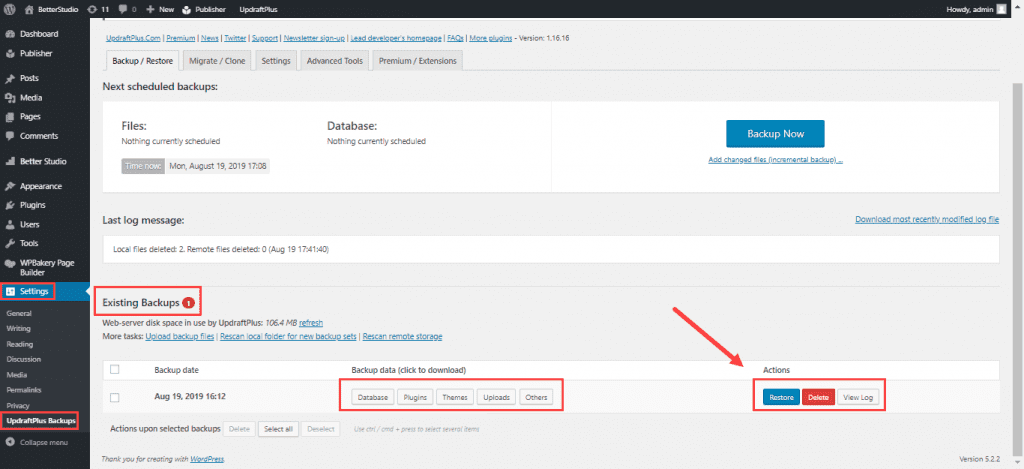

To restore your WordPress using a backup, click on “Existing Backups” to view all of the backups taken from your website.
By clicking on “Restore” the plugin will use that backup to restore your website. When you click on it, a box will open.
Choose which sections of the backup you wish to use. For example, themes, database, plugins and etc. If you select all of the options your website will be fully restored to that backup.
UpdraftPlus also offers premium features. For example, in the premium version, you could see the exact date and time of your next backup.
How to manually backup WordPress website?
Manual WordPress backup has two simple steps:
- File backup
- Database backup
You will have to manually backup both and later on you will have to restore both of them.
1. Backup WordPress files


There are two ways to backup WordPress files. One easy way is to use cPanel > File Manager and select all of your files in public_html and click on zip or RAR and then download it in your computer.
Keep in mind, once you start your download you cannot pause it. When the internet speed is low, some users may give up on downloading their backup.
The other way is to use FTP. The best FTP client we recommend to use is FileZilla. Download it from their official website.
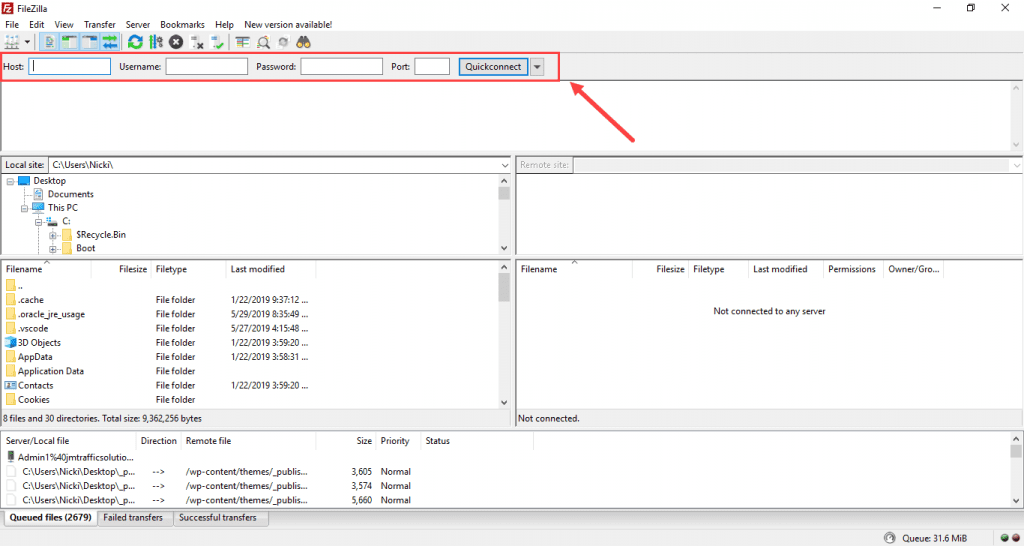

First, you have to enter your FTP credential. Usually, this information is given to you by your hosting provider.
If in any case, you cannot find the said information, you can simply go to your cPanel, head over to the FTP section and create a new account.
Now go back to FileZilla and type in your credential and connect to your host/server. Drag and drop the files on the right window (your host) to the left window (your computer).
2. Backup WordPress database


To backup your WordPress database, you have to click on “backup” section in your cPanel. Through this, you can backup and download your MySQL.
Restore WordPress backup
If your site is facing a severe problem and no solution is working, the last resort is to restore the backup.
Many steps above, can be taken in reverse in the process of restoring WordPress backup. You can find the tutorial to restore WordPress backup in our other article.
Don’t forget that backups need to be created frequently so that you have access to a recent version of your site, in case of any emergency.



